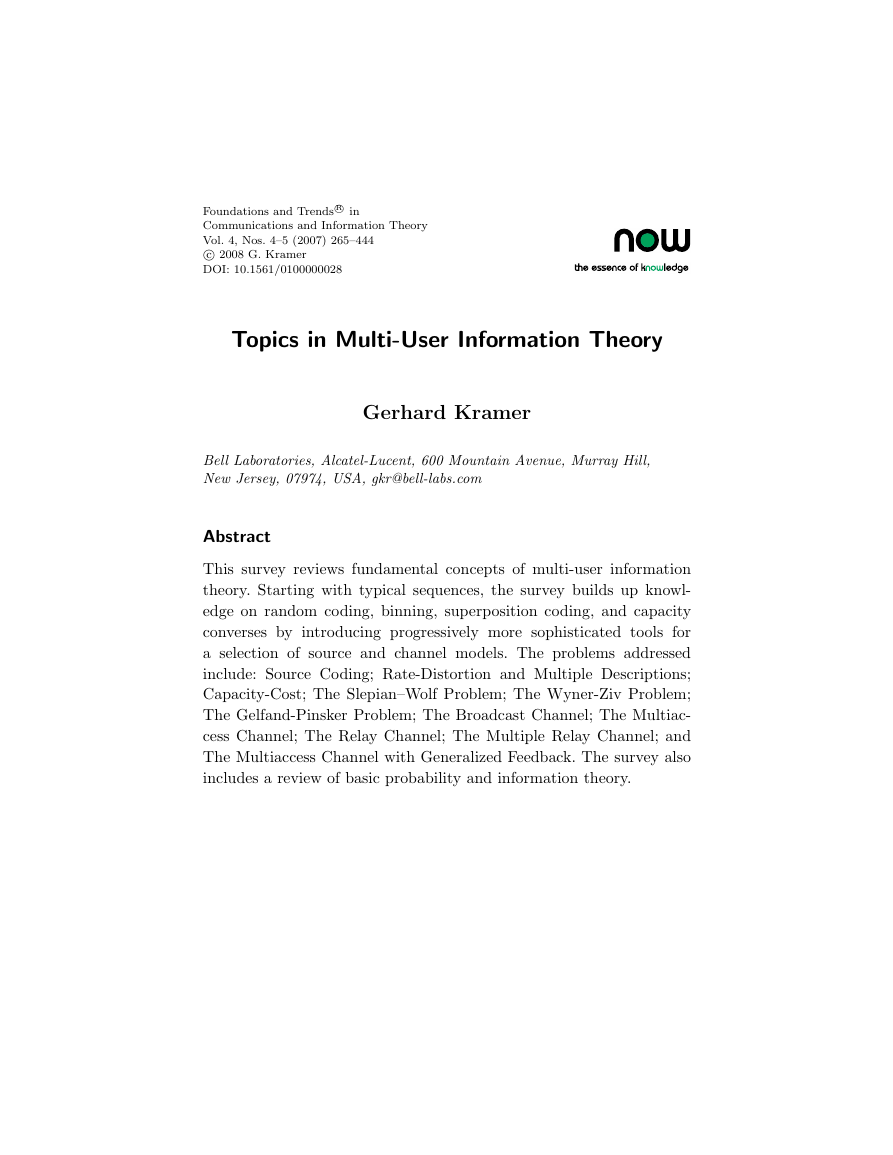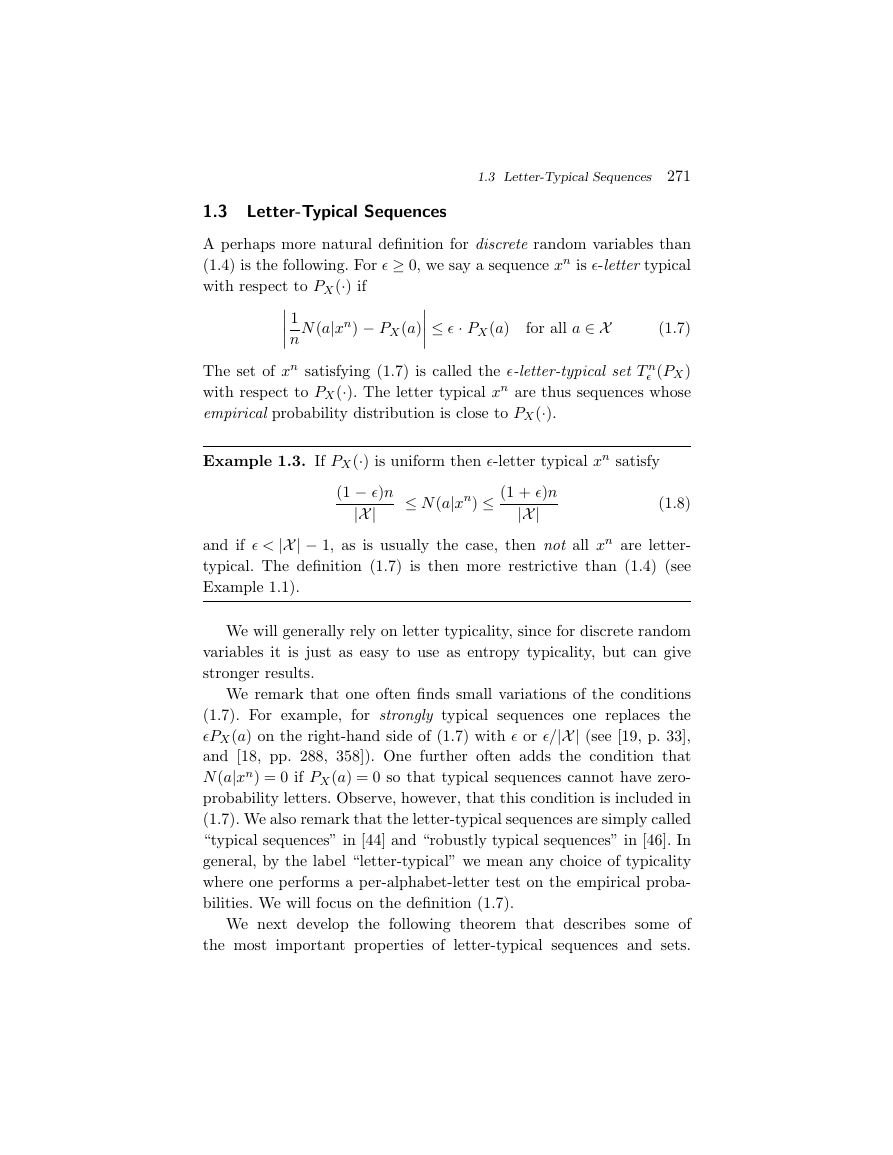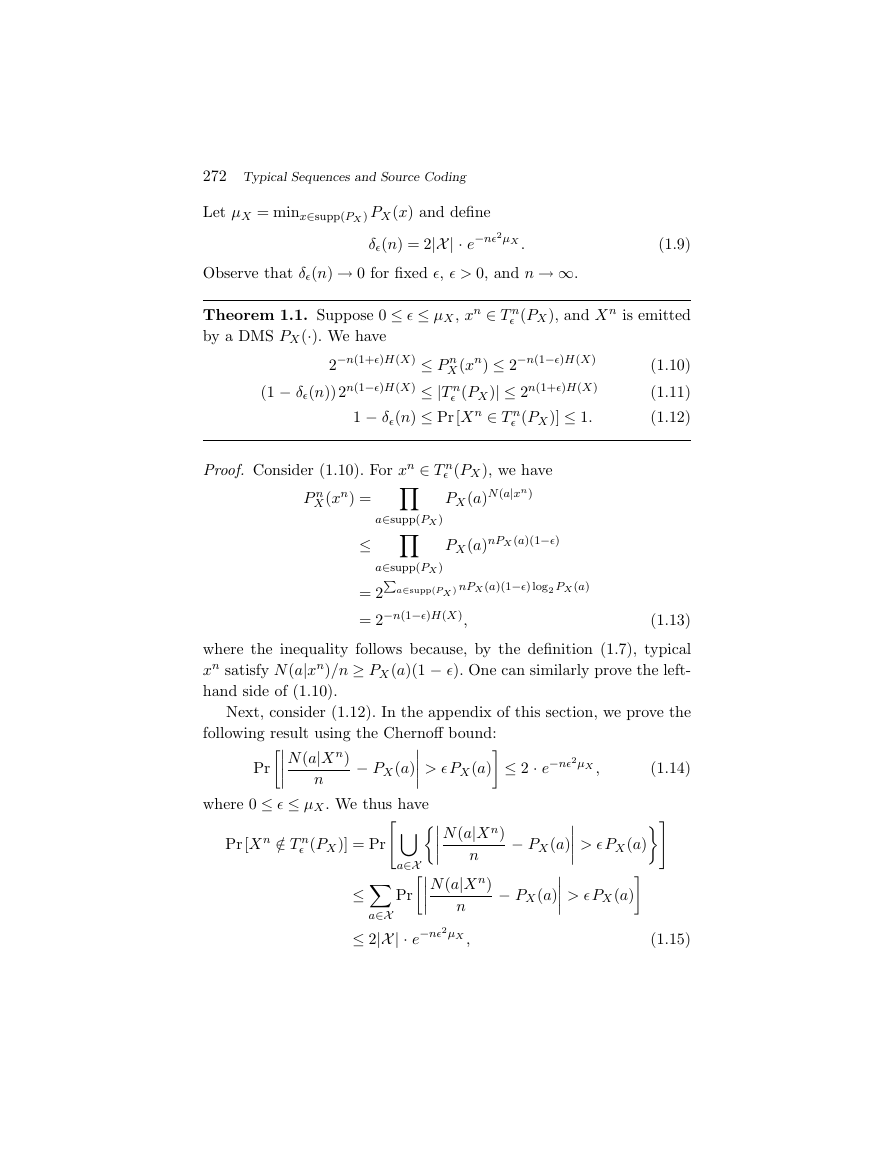Foundations and Trends R! in
Communications and Information Theory
Vol. 4, Nos. 4–5 (2007) 265–444
c! 2008 G. Kramer
DOI: 10.1561/0100000028
Topics in Multi-User Information Theory
Gerhard Kramer
Bell Laboratories, Alcatel-Lucent, 600 Mountain Avenue, Murray Hill,
New Jersey, 07974, USA, gkr@bell-labs.com
Abstract
This survey reviews fundamental concepts of multi-user information
theory. Starting with typical sequences, the survey builds up knowl-
edge on random coding, binning, superposition coding, and capacity
converses by introducing progressively more sophisticated tools for
a selection of source and channel models. The problems addressed
include: Source Coding; Rate-Distortion and Multiple Descriptions;
Capacity-Cost; The Slepian–Wolf Problem; The Wyner-Ziv Problem;
The Gelfand-Pinsker Problem; The Broadcast Channel; The Multiac-
cess Channel; The Relay Channel; The Multiple Relay Channel; and
The Multiaccess Channel with Generalized Feedback. The survey also
includes a review of basic probability and information theory.
�
Notations and Acronyms
We use standard notation for probabilities, random variables,
entropy, mutual information, and so forth. Table 1 lists notation devel-
oped in the appendices of this survey, and we use this without further
explanation in the main body of the survey. We introduce the remain-
ing notation as we go along. The reader is referred to the appendices for
a review of the relevant probability and information theory concepts.
Table 1 Probability and information theory notation.
Sequences, Vectors, Matrices
xn
xnym
x
H
|Q|
the finite sequence x1, x2, . . . , xn
sequence concatenation: x1, x2, . . . , xn, y1, y2, . . . , ym
the vector [x1, x2, . . . , xn]
a matrix
determinant of the matrix Q
(Continued)
266
�
Notations and Acronyms 267
Table 1 (Continued)
Probability
Pr[A]
Pr[A|B]
PX(·)
PX|Y (·)
supp(PX)
pX(·)
pX|Y (·)
E [X]
E [X|A]
Var[X]
QX
probability of the event A
probability of event A conditioned on event B
probability distribution of the random variable X
probability distribution of X conditioned on Y
support of PX
probability density of the random variable X
probability density of X conditioned on Y
expectation of the real-valued X
expectation of X conditioned on event A
variance of X
covariance matrix of X
Information Theory
H(X)
H(X|Y )
I(X; Y )
I(X; Y |Z)
D(PX!PY )
h(X)
h(X|Y )
H2(·)
entropy of the discrete random variable X
entropy of X conditioned on Y
mutual information between X and Y
mutual information between X and Y conditioned on Z
informational divergence between PX and PY
differential entropy of X
differential entropy of X conditioned on Y
binary entropy function
�
1
Typical Sequences and Source Coding
1.1 Typical Sequences
Shannon introduced the notion of a “typical sequence” in his 1948 paper
“A Mathematical Theory of Communication” [55]. To illustrate the
idea, consider a discrete memoryless source (DMS), which is a device
that emits symbols from a discrete and finite alphabet X in an inde-
pendent and identically distributed (i.i.d.) manner (see Figure 1.1).
Suppose the source probability distribution is PX(·) where
PX(0) = 2/3
and PX(1) = 1/3.
(1.1)
Consider the following experiment: we generated a sequence of
length 18 by using a random number generator with the distribution
(1.1). We write this sequence below along with three other sequences
that we generated artificially.
(a) 0, 0, 0, 0, 0, 0, 0, 0, 0, 0, 0, 0, 0, 0, 0, 0, 0, 0
(b) 1, 0, 1, 1, 0, 1, 0, 1, 1, 1, 0, 0, 0, 0, 1, 0, 1, 0
(c) 0, 0, 0, 1, 1, 0, 0, 1, 0, 0, 1, 1, 0, 0, 0, 1, 1, 0
(d) 1, 1, 1, 1, 1, 1, 1, 1, 1, 1, 1, 1, 1, 1, 1, 1, 1, 1.
268
�
1.2 Entropy-Typical Sequences
269
DMS
Fig. 1.1 A discrete memoryless source with distribution PX(·).
If we compute the probabilities that these sequences were emitted by
the source (1.1), we have
(a) (2/3)18 · (1/3)0 ≈ 6.77 · 10−4
(b) (2/3)9 · (1/3)9 ≈ 1.32 · 10−6
(c) (2/3)11 · (1/3)7 ≈ 5.29 · 10−6
(d) (2/3)0 · (1/3)18 ≈ 2.58 · 10−9.
Thus, the first sequence is the most probable one by a large margin.
However, the reader will likely not be surprised to find out that it is
sequence (c) that was actually put out by the random number genera-
tor. Why is this intuition correct? To explain this, we must define more
precisely what one might mean by a “typical” sequence.
1.2 Entropy-Typical Sequences
Let xn be a finite sequence whose ith entry xi takes on values in X .
We write X n for the Cartesian product of the set X with itself n times,
i.e., we have xn ∈X n. Let N(a|xn) be the number of positions of xn
having the letter a, where a ∈X .
There are several natural definitions for typical sequences. Shannon
in [55, Sec. 7] chose a definition based on the entropy of a random
variable X. Suppose that X n is a sequence put out by the DMS PX(·),
which means that PXn(xn) =!n
i=1 PX(xi) is the probability that xn
was put out by the DMS PX(·). More generally, we will use the notation
(1.2)
PX(xi).
X(xn) =
P n
n"i=1
We further have
P n
X(xn) =#!a∈supp(PX) PX(a)N(a|xn)
0
if N(a|xn) = 0 whenever PX(a) = 0
else
(1.3)
�
270 Typical Sequences and Source Coding
1
n
−
log2 P n
and intuitively one might expect that the letter a occurs about
X(xn) ≈ Πa∈supp(PX)PX(a)nPX(a) or
N(a|xn) ≈ nPX(a) times, so that P n
X(xn) ≈ $a∈supp(PX)
%%%%
Shannon therefore defined a sequence xn to be typical with respect to
� and PX(·) if
− H(X)%%%% <�
−PX(a)log2 PX(a).
for some small positive �. The sequences satisfying (1.4) are sometimes
called weakly typical sequences or entropy-typical sequences [19, p. 40].
We can equivalently write (1.4) as
2−n[H(X)+�] < P n
X(xn) < 2−n[H(X)−�].
(1.5)
X(xn)
−log2 P n
n
(1.4)
Example 1.1. If PX(·) is uniform then for any xn we have
X(xn) = |X|−n = 2−nlog2 |X| = 2−nH(X)
P n
(1.6)
and all sequences in X n are entropy-typical.
Example 1.2. The source (1.1) has H(X) ≈ 0.9183 and the above four
sequences are entropy-typical with respect to PX(·) if
(a) �> 1/3
(b) �> 1/6
(c) �> 1/18
(d) �> 2/3.
Note that sequence (c) requires the smallest �.
We remark that entropy typicality applies to continuous random
X(xn) in (1.4)
X(xn). In contrast, the next definition can be
variables with a density if we replace the probability P n
with the density value pn
used only for discrete random variables.
�
1.3 Letter-Typical Sequences
1.3 Letter-Typical Sequences
271
A perhaps more natural definition for discrete random variables than
(1.4) is the following. For � ≥ 0, we say a sequence xn is �-letter typical
with respect to PX(·) if
for all a ∈X
(1.7)
%%%%
1
n
N(a|xn) − PX(a)%%%% ≤ � · PX(a)
The set of xn satisfying (1.7) is called the �-letter-typical set T n
� (PX)
with respect to PX(·). The letter typical xn are thus sequences whose
empirical probability distribution is close to PX(·).
Example 1.3. If PX(·) is uniform then �-letter typical xn satisfy
(1 − �)n
|X|
≤ N(a|xn) ≤
(1 + �)n
|X|
(1.8)
and if �< |X| − 1, as is usually the case, then not all xn are letter-
typical. The definition (1.7) is then more restrictive than (1.4) (see
Example 1.1).
We will generally rely on letter typicality, since for discrete random
variables it is just as easy to use as entropy typicality, but can give
stronger results.
We remark that one often finds small variations of the conditions
(1.7). For example, for strongly typical sequences one replaces the
�PX(a) on the right-hand side of (1.7) with � or �/|X| (see [19, p. 33],
and [18, pp. 288, 358]). One further often adds the condition that
N(a|xn) = 0 if PX(a) = 0 so that typical sequences cannot have zero-
probability letters. Observe, however, that this condition is included in
(1.7). We also remark that the letter-typical sequences are simply called
“typical sequences” in [44] and “robustly typical sequences” in [46]. In
general, by the label “letter-typical” we mean any choice of typicality
where one performs a per-alphabet-letter test on the empirical proba-
bilities. We will focus on the definition (1.7).
We next develop the following theorem that describes some of
the most important properties of letter-typical sequences and sets.
�
272 Typical Sequences and Source Coding
Let µX = minx∈supp(PX) PX(x) and define
δ�(n) = 2|X| · e−n�2µX .
Observe that δ�(n) → 0 for fixed �, �> 0, and n → ∞.
Theorem 1.1. Suppose 0 ≤ � ≤ µX, xn ∈ T n
by a DMS PX(·). We have
2−n(1+�)H(X) ≤ P n
(1 − δ�(n))2n(1−�)H(X) ≤| T n
X(xn) ≤ 2−n(1−�)H(X)
� (PX)|≤ 2n(1+�)H(X)
� (PX)] ≤ 1.
1 − δ�(n) ≤ Pr[X n ∈ T n
� (PX), and X n is emitted
(1.9)
(1.10)
(1.11)
(1.12)
P n
� (PX), we have
PX(a)N(a|xn)
Proof. Consider (1.10). For xn ∈ T n
X(xn) = "a∈supp(PX)
≤ "a∈supp(PX)
= 2!a∈supp(PX ) nPX(a)(1−�)log2 PX(a)
= 2−n(1−�)H(X),
PX(a)nPX(a)(1−�)
(1.13)
where the inequality follows because, by the definition (1.7), typical
xn satisfy N(a|xn)/n ≥ PX(a)(1 − �). One can similarly prove the left-
hand side of (1.10).
Next, consider (1.12). In the appendix of this section, we prove the
following result using the Chernoff bound:
where 0 ≤ � ≤ µX. We thus have
Pr[X n /∈ T n
Pr&%%%%
(1.14)
N(a|X n)
n
− PX(a)%%%% > � PX(a)’ ≤ 2 · e−n�2µX ,
� (PX)] = Pr()a∈X#%%%%
− PX(a)%%%% > � PX(a)*+
− PX(a)%%%% > � PX(a)’
Pr&%%%%
≤$a∈X
≤ 2|X| · e−n�2µX ,
n
N(a|X n)
N(a|X n)
n
(1.15)
�
















 2023年江西萍乡中考道德与法治真题及答案.doc
2023年江西萍乡中考道德与法治真题及答案.doc 2012年重庆南川中考生物真题及答案.doc
2012年重庆南川中考生物真题及答案.doc 2013年江西师范大学地理学综合及文艺理论基础考研真题.doc
2013年江西师范大学地理学综合及文艺理论基础考研真题.doc 2020年四川甘孜小升初语文真题及答案I卷.doc
2020年四川甘孜小升初语文真题及答案I卷.doc 2020年注册岩土工程师专业基础考试真题及答案.doc
2020年注册岩土工程师专业基础考试真题及答案.doc 2023-2024学年福建省厦门市九年级上学期数学月考试题及答案.doc
2023-2024学年福建省厦门市九年级上学期数学月考试题及答案.doc 2021-2022学年辽宁省沈阳市大东区九年级上学期语文期末试题及答案.doc
2021-2022学年辽宁省沈阳市大东区九年级上学期语文期末试题及答案.doc 2022-2023学年北京东城区初三第一学期物理期末试卷及答案.doc
2022-2023学年北京东城区初三第一学期物理期末试卷及答案.doc 2018上半年江西教师资格初中地理学科知识与教学能力真题及答案.doc
2018上半年江西教师资格初中地理学科知识与教学能力真题及答案.doc 2012年河北国家公务员申论考试真题及答案-省级.doc
2012年河北国家公务员申论考试真题及答案-省级.doc 2020-2021学年江苏省扬州市江都区邵樊片九年级上学期数学第一次质量检测试题及答案.doc
2020-2021学年江苏省扬州市江都区邵樊片九年级上学期数学第一次质量检测试题及答案.doc 2022下半年黑龙江教师资格证中学综合素质真题及答案.doc
2022下半年黑龙江教师资格证中学综合素质真题及答案.doc